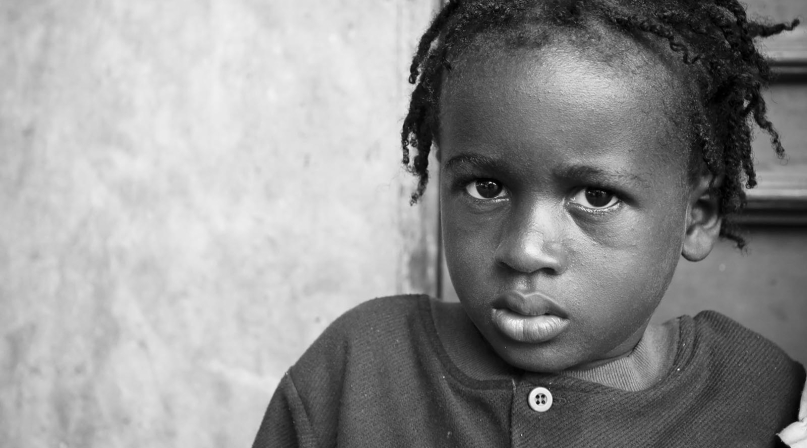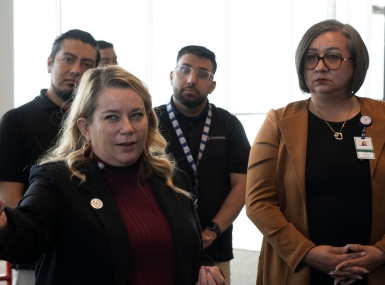Social services grants, bedrock for many counties
Upcoming Events
Related News

SSBG is crucial to counties' aid to children and families in poverty
The Social Services Block Grant (SSBG) was signed into law by President Ronald Reagan in 1981 (P.L. 97-35) and is administered by the Department of Health and Human Services’ Administration for Children and Families. The program is an entitlement to states and falls into the category of “non-defense mandatory spending.” SSBG, a flexible funding source that can be used for nearly 30 different types of services, allows states and local jurisdictions to tailor social service programming to their populations’ needs. The flexibility of SSBG is crucial to its recipients as it helps fill the gaps in and between other human services programs receiving insufficient federal funding.
Each year, the federal government allocates funds to states to support social services for vulnerable children, adults and families through SSBG. Because of SSBG, states and local jurisdictions are able to provide essential services that help achieve a number of goals: to reduce dependency and promote self-sufficiency; protect children and adults from neglect, abuse and exploitation; and help individuals who are unable to take care of themselves.
Although the focus on Capitol Hill is the total dollar amount of SSBG, it is important to acknowledge the impact SSBG has on individuals across the country. This report brings a more personal perspective to SSBG as offers anecdotes on the vital role the block grant has played in helping individuals overcome obstacles in their lives.
Child Welfare Services
Across the country, millions of children receive child welfare services each year, improving their health and well-being. SSBG funding provides critical front-end child welfare services that other funding streams cannot. In FY 2014, 49 states reported using $47 million in SSBG expenditures for child welfare services. The absence of SSBG funding to identify risks, provide immediate support and refer children and their families to services, can put children at risk of out-of-home placement or delay reunification.
Status SSBG
Since the beginning of the 115th Congress, SSBG’s future remained uncertain as the program continued to be targeted for further cuts or even elimination. Although SSBG has champions on both sides of the aisle, the current unpredictability around the federal budget and efforts to reduce spending threatens the future of the block grant. Without this block grant, counties would be hard pressed to replace lost SSBG funds that are critical to providing services to the most vulnerable populations including young children.
In California, child welfare services played a critical role in helping Patricia reunite with her children. Because of struggles with substance abuse, Patricia gave up her first seven children to adoption. She was sober when her next two children were born, but her third child tested positive for drug exposure. As a result, all three children were taken into custody and placed into foster homes.
With nowhere to turn, Patricia visited Los Angeles County’s Department of Children and Families Services (DCFS). DCFS referred her to a large non-profit organization that connected her with the substance abuse treatment and other family-focused services that Patricia needed.
Both Patricia and her husband started going to therapy and attending parenting courses. They learned about child development, anger management and relapse prevention. Additionally, a community advocate went with Patricia to court appointments, helping her understand the ins and outs of dependency court and what it would take to get her children back. After three years, and the help of child welfare services, Patricia’s children could return home.
With the help of SSBG funding, Los Angeles County’s DCFS and the non-profit organization were able to provide services to Patricia that allowed her to overcome her substance abuse and be reunited with her children. In Los Angeles County, SSBG funding has made it possible for vulnerable families like Patricia’s to receive these services and start a new future.
Child Protective Services
Child protective services (CPS) are intended to protect and safeguard children who face abuse, neglect and exploitation. SSBG is a critical federal funding source for vulnerable children who are unable to protect their own interests. In FY 2014, 39 states reported spending a total of $329 million of SSBG funds for CPS.
In Alabama, CPS became involved with 4-year-old Chelsea after her neighbors filed a neglect report about an unsupervised child in the street. When local authorities returned Chelsea to her home, the officer noticed deplorable living conditions. After CPS’ initial visit and assessment, it determined that the three children living in the home did not meet their proper developmental milestones — they were neither toilet trained nor verbal. Because of severe neglect, the children were removed from their home and connected to a mental health agency for psychological diagnosis and evaluations.
Each child’s separate needs were addressed: one sibling was referred to the local Head Start, the second sibling received residential care and the last sibling received inpatient treatment. Within a year’s time, each child thrived in their respective treatments and could return home.
In addition to these health services, CPS also made sure the family received outpatient services from the community mental health agency. The agency taught the parents about each child’s diagnosis and how to reinforce skills the children were taught in their treatment. SSBG funding can be used for a variety of critical services, including those Chelsea’s family used.
In Alabama, CPS is one of the main beneficiaries of SSBG funding. In 2014, the state used $9 million, or about 40 percent, of its SSBG funds for CPS. Although there are other national funding sources for CPS, including the Child Abuse Prevention and Treatment Act (CAPTA), SSBG funding for CPS far outpaces CAPTA funding. In fact, in 2014, Alabama used $18 million of SSBG funds, while receiving only $389,796 from CAPTA.
Attachments
Related News

El Paso County, Texas helps migrants on their way
Though they don't often stay more than a day, asylum seekers receive care and services from El Paso County, Texas before they leave for their next destination.

L.A. County fends off homelessness with an assist from A.I.
A predictive model pulls data from six county departments to create a list of the county’s most vulnerable population — people who frequently show up in the county’s criminal justice and hospital systems and who access benefits like SNAP.
